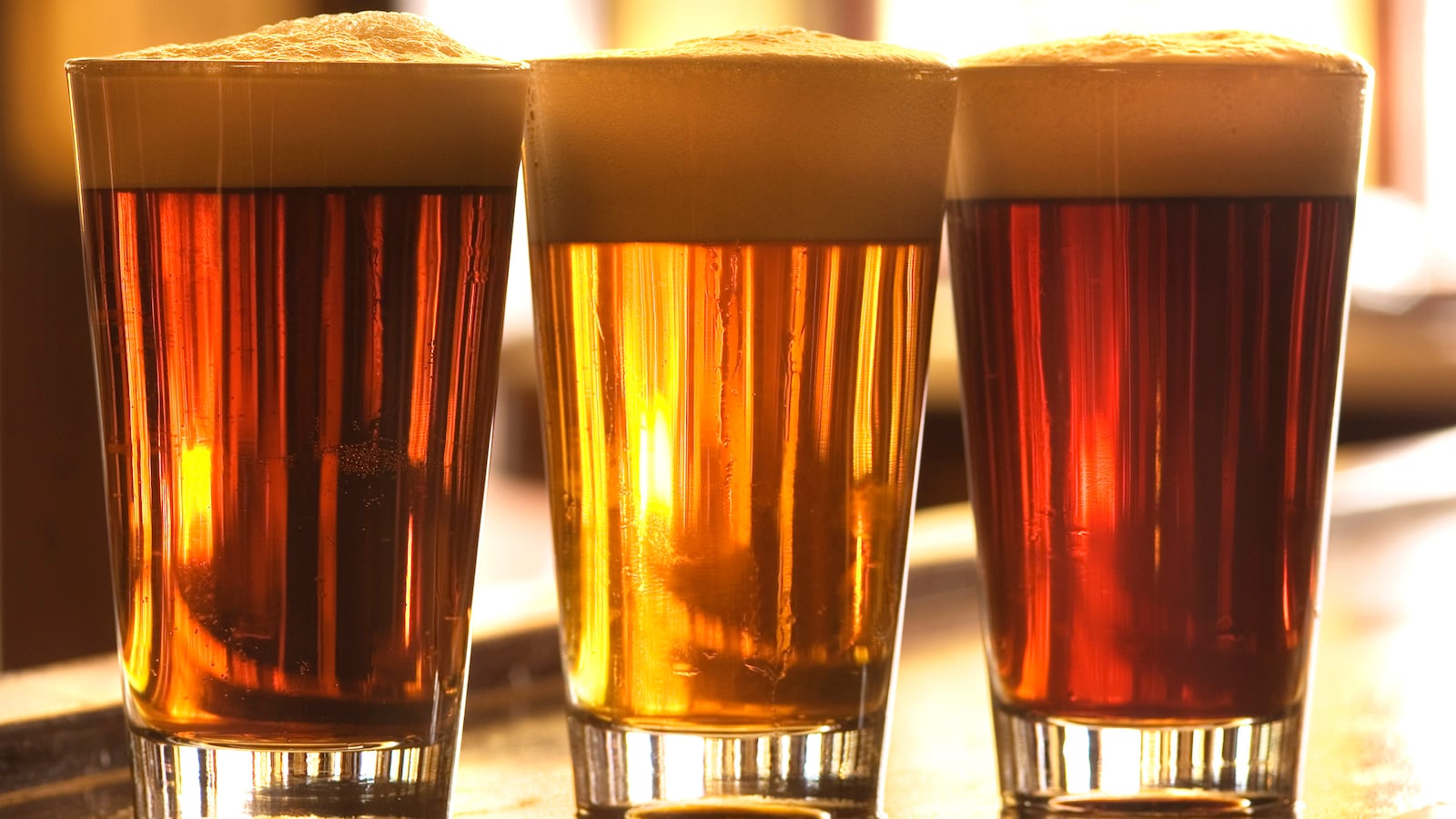No matter if you call it “West Coast,” “Black,” “Belgian,” “Double,” “Imperial,” “White,” “Session” or just plain-old “India Pale Ale,” sales of all kinds of IPA beer have exploded over the last 15 years.
And seemingly a new type of IPA seems to pop up every four to six months. That way if you’re feeling IPA’d out, maybe what you need is a…um…new IPA. Brewers across the country are standing by to help you.
IPA has sailed far from its 19th century roots, when it was brewed in England for export to colonial India. (It was made with an extra dose of hops, which ensured it was drinkable after a long voyage.) The beer was picked up by American craft brewers in the 1980s, and quickly became a staple and signature of the U.S. Traditionally, IPA was a gold-to-amber beer full of hop bitterness, and a good amount of hop aromas, including pine, citrus peel and grass.
These days, “IPA” stands for many other things. Brewers joke that it means “Increases Profits Automatically.” Bartenders wryly tag it as “I’ll Pour Another.” Both of these jokes, of course, reference the strong sales of any beer labeled as IPA, even if it doesn’t have any of the style’s traditional traits.
As a result, seemingly any beer could be labeled as IPA now. Add dark malts: Black IPA (yes, that means people are making a dark pale ale). Dial back the alcohol level: Session IPA. Boost the hops and the alcohol: Double or Imperial IPA. Take a cloudy, spicy wheat beer like Allagash White or Blue Moon and add a big handful of hops: White IPA.
But all those styles are more than five years old and there’s now new branches to the IPA family tree.
The most successful is the New England IPA, which just debuted in the Great American Beer Festival competition guidelines as “Juicy or Hazy IPA.” The category got 414 entries for award consideration, which marked the first time in more than fifteen years that “American-Style IPA” didn’t get the most IPA entries. The beer is hazy with so-called “juicy” fruit aromas and is not as bitter as standard IPAs.
How do brewers do that? The beer is hazy with hop components (oils and resins) and rich with aromas and flavors from being heavily “dry-hopped,” a process where bucket-loads of dry hop flowers are added to the fermenters. They add a lot fewer hops in the actual brew, which reduces the bitterness of the beer. The hops for these beers are usually strains that exhibit fruit and tropical fruit aromas.
However, don’t confuse hazy IPAs with milkshake IPAs. Those are IPAs, often with fruit flavors, that have been dosed with lactose and milk sugar to boost the sweetness of the beer. We should probably talk about a few other sweet IPAs now, too. Ice cream truck IPAs add sugar and significant amounts of ice cream flavors (think strawberry, vanilla, chocolate, rum raisin, orange creamsicle). There are also pie IPAs that are stuffed with familiar pie flavors, like blueberry, coconut, cherry and, just in time for fall, pumpkin!
If you don’t like the idea of sweet IPA, then try a sour or Brett IPA. These beers are intentionally soured to a pleasant tartness that complements the citrus notes of particular hop strains. “Brett” is brettanomyces, a non-standard yeast that gives beers a notable woody or bready dryness that sharpens the hoppy edge of an IPA.
That brings up one of the very newest IPA styles: Brut. As the wine-inspired name implies, this is a dry beer, one that has been fermented to a very low amount of leftover sugar. The brewer also adds very little or even zero hops to the beer in the boil, but dry-hops it with a very generous hand. This gives you a beer with a lot of hop, but very little bitterness.
Brut is an interesting IPA experience. The first Brut I had, called simply “Brut IPA” from Dirty Pretty brewery in Portland, Oregon, was full of great fruity hop aroma, but claimed only 5 IBU (International Bittering Units). Most American IPAs start around 50 IBU and soar upward from there. Brut is light and easy to drink, but packed with sensory beauty.
There’s another wine-inspired IPA—rosé. There are only a few of them out there, but given the popularity of all things rosé, no doubt you’ll see more of these beers. BridgePort (another Portland brewery) makes their Rosé IPA year-round, with a relatively low 5-percent alcohol and incorporates hibiscus flowers for a pink hue and subtly floral aroma. Tiny Wyndridge Farm Brewing in rural Dallastown, Pennsylvania, makes one with hibiscus and dragon fruit, with 6.5-percent alcohol and a deep pink color.
If that doesn’t sound like your cup of tea, how about a tea-infused IPA? I’ve had a fair number of these, and the florals, tannins, and spice notes blend well with IPA character. The smoky notes of a lapsang souchong, the herbal bergamot notes of earl grey, or the robust punch of Darjeeling make a bold IPA even more so. It’s probably no surprise that there are coffee IPAs as well.
Moving into straight-up added flavors opens the biggest category of new IPAs: fruited. Whether distilled essences or pure crushed pulp, a fruit addition is an old trick in a brewer’s bag, but adding it to IPA is a relatively new phenomenon. Ballast Point has made a signature of it, adding a variety of fruits (and hot peppers) to its Sculpin.
I do get a bit cynical about the whole thing when I see brewers shoving hops into a pilsner and tagging it as an “IPL;” that is, of course, an India Pale Lager. It’s a nod to the fact that “IPA” on a label sells beer, but it just feels wrong to me even if drinkers are demanding to taste new IPAs.
But hunting down new IPAs can drive you crazy after a while, though, which is why I started looking for and drinking classics, like Bells Two Hearted IPA and Stone IPA. And you can be sure when Sierra Nevada Celebration comes out this winter, I’m going to be tearing into it.
In the meantime, please hold my pint of chocolate chip IPA.






